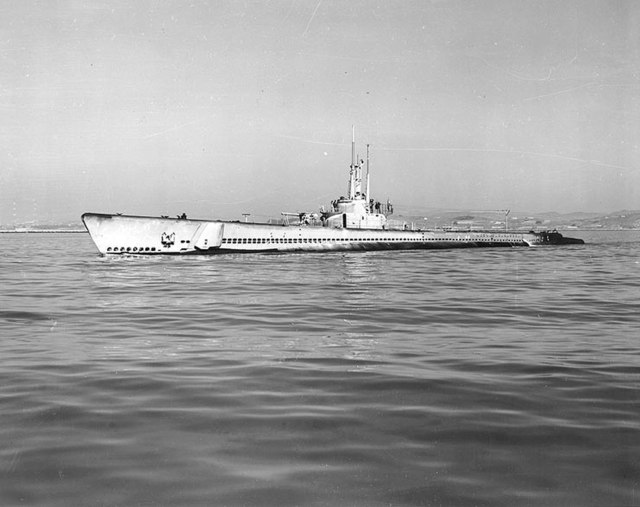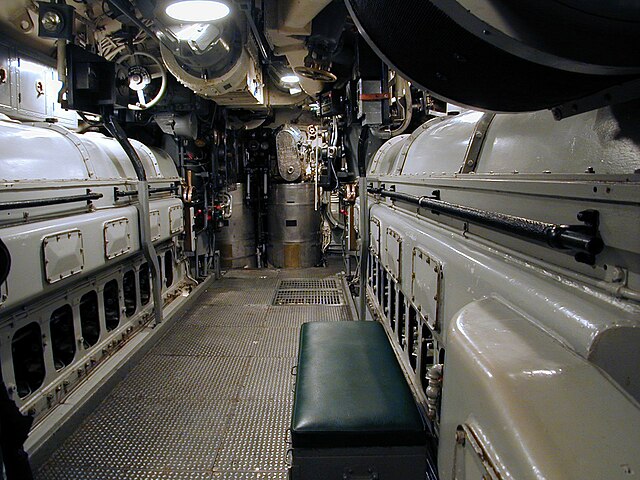USS Baya (SS/AGSS-318), a Balao-class submarine, was a ship of the United States Navy named for the baya. During World War II, she completed five war patrols in the South China Sea, Gulf of Siam, Java Sea, and Philippine Sea between 23 August 1944 and 25 July 1945. She sank four Japanese vessels totaling 8855 gross register tons, and shared credit with the submarine USS Hawkbill (SS-366) for sinking a Japanese 8,407-gross register ton passenger-cargo ship. After World War II, she saw service as a research submarine during the Cold War and operated off Vietnam during the Vietnam War.
USS Baya (AGSS-318), post-conversion in 1962.
Baya in 1957, after her first rebuild, with large fairwater abaft her conning tower.
USS Baya shown during her Naval Electronics Laboratory (NEL) duties. The vessel in the upper part of the photo is the NEL oceanographic research ship USS Rexburg.
The Balao class was a design of United States Navy submarine used during World War II, and with 120 boats completed, the largest class of submarines in the United States Navy. An improvement on the earlier Gato class, the boats had slight internal differences. The most significant improvement was the use of thicker, higher yield strength steel in the pressure hull skins and frames, which increased their test depth to 400 feet (120 m). Tang actually achieved a depth of 612 ft (187 m) during a test dive,
and exceeded that test depth when taking on water in the forward torpedo room while evading a destroyer.
USS Balao in 1944
Scheme of USS Pampanito (SS-383)
General Motors Cleveland Model 16-248 diesel engine
Fairbanks-Morse Model 38D8⅛ diesel engine







